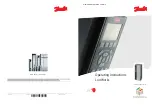
13
Frames:
Both Down . . . . .for 30 frames/second
Off/MTC:
Down . . . . . . . . . . . . . . . . . . . . .for MTC
DTL/MTC:
Down . . . . . .for MTC (not Direct Lock)
Delay:
Up . . . . . . . . . . . . . . . .this should be off
Regenerate:
Up . . . . . . . . . .must be Off to sync at all
Duplicate:
Up . .turn off to avoid any possibility of
feed back
Ordinarily, when syncing to tape you need to first record a SMPTE sync
stripe. Occasionally, you may be given a tape with a SMPTE stripe
already recorded onto one of its tracks. However, this is the exception,
not the rule. After a SMPTE stripe has been recorded to tape you can
“slave” your Mac sequencer to tape.
If you are going to use Mac Syncman in a more extensive MIDI set-up
with multiple MIDI Sound Modules, you should make sure that all of
the various sound module MIDI Ins are connected to either the modem
or printer port MIDI Outs. If you use the printer port MIDI Outs with
the above set-up, you will have to make sure that your sequencer pro-
gram sends the appropriate MIDI information out the printer port. If
you don’t do this you won’t hear the modules which are connected to
the printer port.










































